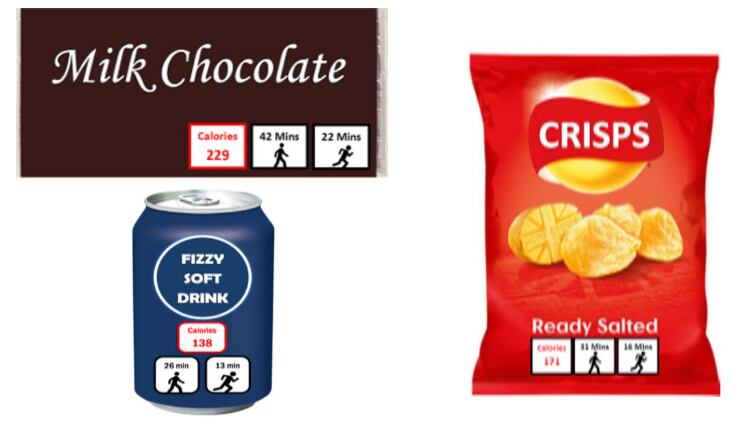Published in the Journal of Epidemiology & Community Health, the research – led by Loughborough University professor of exercise and health sciences Amanda J Daley – looked at the effect of physical activity calorie equivalent (PACE) food labelling on consumers’ eating behaviours.
The labels provide the public with information about the amount of physical activity required to expend the number of calories in food and drinks, in a bid to encourage healthier choices and reduce disease.
Law firm DWF global head of food Dominic Watkins welcomed any proposal that directly or indirectly encouraged the public to exercise, but was sceptical that translating energy into exercise would necessarily work.
‘Potential value’
“Individual metabolisms have a significant impact on energy usage,” Watkins explained. “Where this proposal potentially has value is in allowing the public to assess calorie intake in a more tangible way, but it won’t single-handedly solve the problem of ‘on the go’ snacking.
“If people don't take account of calories, traffic light symbols or other advisory labels, it is unlikely that this will be the measure to cut through.”
He also warned of the practical implications of trying to implement such a radically different form of labelling on food and drink products.
“While there may be scope to do this for non-prepacked foods pre-Brexit, the reality is that the labelling law for pre-packed foods restricts the types of information that can be repeated on the front of packs and, much like the previous proposal for sugar cubes, this is unlikely to be permitted,” Watkins added.
Healthier choices
The Food and Drink Federations’ (FDF’s) head of UK diet and health policy Kate Halliwell also agreed that any new research into packaging labelling to help consumers make healthier choices was welcome. Like Watkins, she too raised concerns over PACE labelling only giving an average amount of calories burned.
“And, of course, not all food has to be ‘burnt off’ – we use about 2000-2,500 calories a day through our normal life,” she continued.
“Careful research would be needed to see the impact of this information both in terms of food intake and exercise. The Department of Health has committed to undertake a review of all the evidence on nutrition labelling to see if a new approach is needed and we look forward to working with them on this in 2020.”





